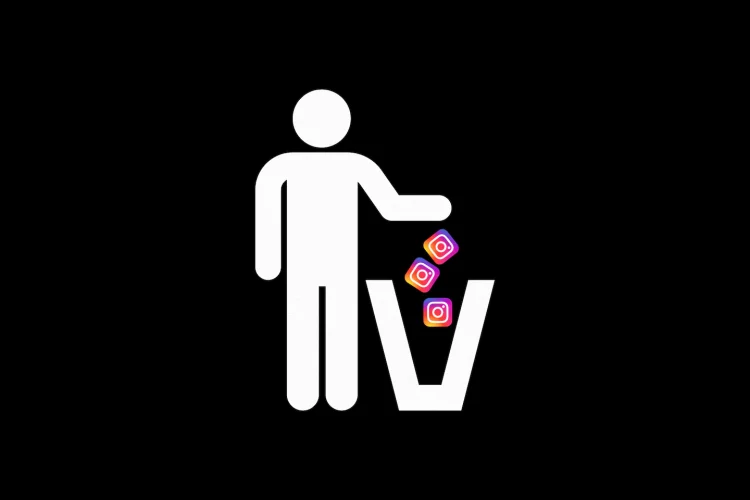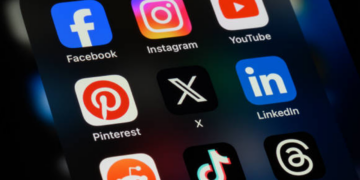Comment on this story
Comment
The recommended content on Melissa Henderson’s Instagram feed used to feel tailored — makeup, cosplay and other art content they liked. Now it seems “almost completely randomized,” according to the 23-year-old, who said they’ve used the app for more than a decade.
When a recommended post does gesture at Henderson’s interests, the quality of the content seems noticeably worse, they said. The helpful crafting instructionals Henderson used to enjoy, for instance, have been replaced by nonsensical crafting “hacks.” One video suggested a quick way to make cake icing is to melt normal ice cream then put it back in the freezer, Henderson said.
“It makes the app almost useless and just a waste of time,” they said.
Henderson is one of many Instagram users annoyed by what they see as the platform’s ongoing move away from friends and photo-sharing and toward video and algorithmically promoted content. Fans and critics alike have attributed many of Instagram’s recent changes to Meta’s competition with the Chinese social media giant TikTok, which shows mostly content from strangers. Last summer, Instagram started adding slots for “recommended” videos — from accounts you don’t follow — in your regular feed. And Meta CEO Mark Zuckerberg said on his Instagram account in June that the app will start testing a full-screen feed like TikTok’s.
More slots for sponsored posts and “reels” — Instagram’s version of TikTok’s video product — could create more moneymaking opportunities for creators and Instagram alike. But the perceived spike in the number of ads and recommended posts isn’t the only frustrating change for some of the app’s billion-plus users: Instagram content, according to 26-year-old Tiffany Jiang, is “trashier” than before.
For instance, she sees lots of short-form video reels that seem designed to promote the reels product itself, with creators hiding and then unveiling their faces to demonstrate the effect of a particular face filter. Jiang said she doesn’t have the patience or interest to wait for the reveal.
“It feels like that random clickbait on the side of a website,” said the Brooklyn-based product designer, who had an internship at Instagram-owner Meta (then Facebook) at the start of her career.
Last year, Instagram started “paying eligible creators based on the views of their qualifying reels,” a spokeswoman said.
App updates almost always rankle users. But Instagram’s experiments such as its new full-screen test feed — which Jiang said looks similar to TikTok’s video-focused feed without the benefit of TikTok’s on-the-nose personalization algorithm — feel particularly exasperating, she said. She has a hard time telling which posts are ads, she said, and her recommended content at times contains posts from people who appear much younger than Instagram’s stated age limit of 13. Instagram feels less like a place to share photos and videos and more like a chaotic “hub” for Meta to “build relationships with brands,” Jiang said.
is anyone else’s instagram feed suddenly 75 percent suggested content that you would never want to see
— zach fruit (@zacharyfruit) July 5, 2022
“There’s no denying that we are in a competitive space, and that’s what motivates us to continue exploring ways to better serve our Instagram community,” said Tessa Lyons-Laing, director of product management at Meta, in a statement shared with The Washington Post. “Instagram is where your friends and interests meet — you connect with friends over entertaining, original content and explore your interests together.”
Lyons-Laing also noted that users can “snooze” recommended content (we’ll show you how below) and that the company has plans for more controls down the road. Right now, she said some people might see more recommendations than others based on the company’s tests.
When asked whether the company has any metrics that support the idea that users enjoy seeing more recommended content, Lyons-Laing said: “We’ve heard from research that people enjoy suggestions because it helps them discover new accounts to follow and explore their interests.” She declined to share any specific numbers or metrics.
Kyle Vondra, a software engineer in Sunnyvale, Calif., said the app most resembles a magazine — “mostly advertising with some occasional content.”
Take heart: There are a few things you can do if your Instagram feed is bumming you out.
Instagram lets you take a break from seeing posts from people you don’t know — but only for 30 days at a time.
To snooze recommended posts, find one in your feed and tap the three dots in the upper right corner. Then choose “not interested.” Instagram will hide the post and give you a menu of choices. Tap on “snooze all suggested posts in feed for 30 days.”
When the posts start popping up after a month, you can try to snooze them again.
Tell the app you want to see less of what you don’t like
If your Explore tab (the tab with the magnifying glass) has run amok, you can try to nudge its algorithm in the right direction.
Find a piece of content you’d rather not see and tap the three circles in the top right corner. Choose “not interested,” and Instagram says it will hide the post and show you fewer posts like it.
Switch to your “favorites” or “following” feeds
“Favorites” shows you posts from accounts you’ve added to your favorites list. “Following” shows content from people you follow in the order it was posted. To toggle to one of these alternate feeds, tap the Instagram logo in the top left corner of the home tab.
(You can build your list of favorite accounts by tapping “favorites” -> “add favorites.” The app will auto-populate a list of people it thinks you like. Mine showed my husband, best friend, dad and co-workers. Tap “confirm favorites” to run with that list, or add and remove people using the “remove” buttons and friend-search bar.)
If you access Instagram from your internet browser, you won’t find ads or suggested posts — just dozens of still photos from your roommate’s boyfriend’s sister’s wedding reception.
Henderson, Jiang and Vondra said they’ve been spending less time on Instagram lately. You can also just quit — as long as you’re okay leaving your connections on Instagram behind.
“It’s the same way there was a phase where we were like, ‘We’d never leave Facebook,’ ” Jiang said. “And now we literally don’t use it anymore.”
Source by www.washingtonpost.com





























